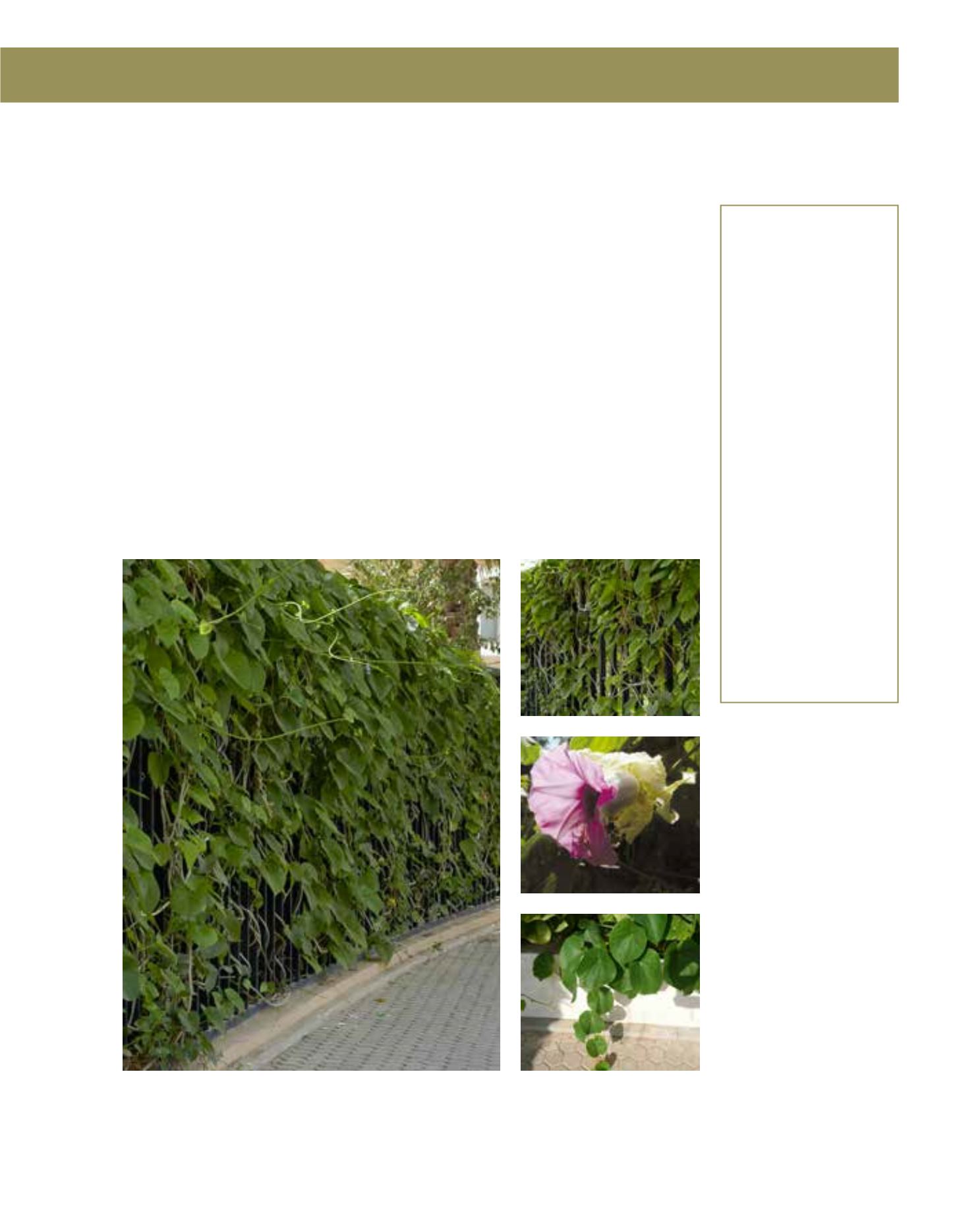

GENERAL
Origin
:
sub-tropical
Vigour
:
fast growing
Humidity
:
semi-arid, semi-
humid
Propagation :
sowing and
pricking out
Maintenance :
moderate
CONDITIONS
Urban climate :
resistant
Dessication :
vulnerable
Stagnant water :
vulnerable
Irrigation
:
medium
Salinity/ppm :
moderate (1800
ppm)
Hardiness
:
-3°C
SHAPE
Type
:
climbers
Height
:
3 m-8 m
Spread
:
4 m-10 m
Foliage
:
evergreen
FLOWER
Colour
:
pink, throat:
violet
Size
:
5 cm - 8 cm
Period
:
July - August
FRUIT
Fruit size
:
1.5 cm
A strong-growing, twining climber, which, with support, can reach the top of four-storey building
facades, A. nervosa is a native of the Indian subcontinent, and has been introduced into many
other countries in the tropics. It can often be seen in Arriyadh entwined in fences or tumbling
over house boundary walls. The plant has very large, heart-shaped leaves and its flowers are
hairy, trumpet-shaped, white outside with purplish-pink petals inside, appearing in cymes. While
invasive, it is prized as a particularly attractive, resilient climber with pretty flowers. Traditionally,
the leaves and roots of the plants have seen many medicinal uses. The plant is very slow-growing
at first, developing into a compact bush, after which it becomes a liana. Without regular irrigation,
it will die back and then regenerate with watering. Propagation is from the toughly coated seed,
which requires nicking or soaking in boiling water for germination. Flowering often begins
soon after germination with sufficient irrigation and plenty of space for root growth. Best in
partial shade, leaves may scorch in full sunlight. For best results, A. nervosa should be planted
in rich, well-drained soil; saturation will cause the plant to wilt and the roots to rot. Under good
conditions, it will develop a massive root system. A strong trellis system or steel cables should
be provided. The major maintenance effort inevitably involves disentwining the vine from places
into which it should not be growing.
56
Argyreia nervosa,
Convolvulaceae
Elephant Vine,
Woolly Morning Glory
















